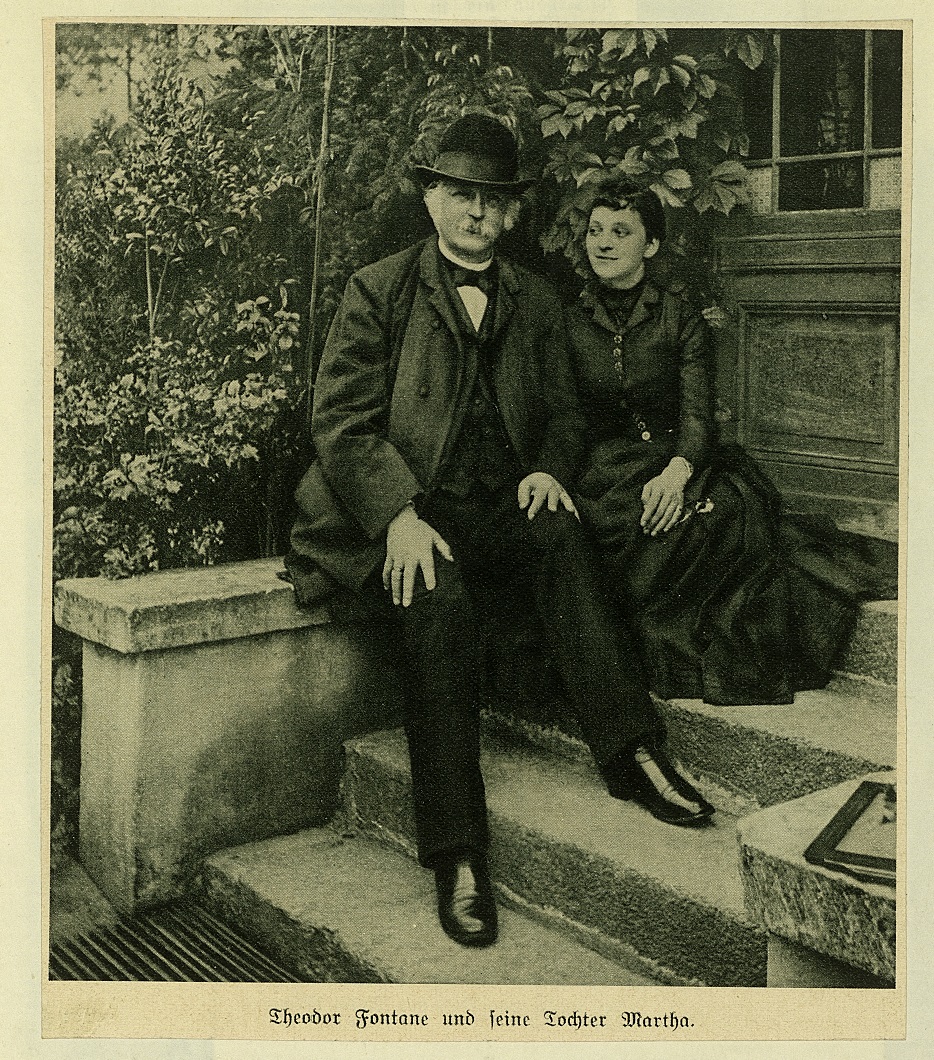Part 1: Traces of His Life
Two weeks after the announcement, on the 1st of January 1820, the son, born on the 30th of December 1819, was christened Heinrich Theodor in the Neuruppin parish church.
»The exam went [...] differently than my father expected. I did not fail, but even less did I get a very good grade. [...] I had the exam behind me, but no trace of life prospect before me; merely a poor bride waiting.«
Theodor Fontane: From Twenty to Thirty, 1898.
In 1840, Theodor Fontane completed his four-year apprenticeship as a pharmacist’s assistant in the Berlin pharmacy »Zum Weißen Schwan« and then worked in various pharmacies. After working as a pharmacist’s assistant for a total of five years, he passed the pharmacist’s examination on March 2, 1847 with the grade »good«. The license entitled him to independently »manage and own a pharmacy«. However, plans to purchase a pharmacy failed due to a lack of funds.
Probably to save postage, Fontane made optimal use of the writing space of this paper: First, he wrote on the letterhead from top left to bottom right, then turned it 90 degrees and wrote on it a second time at right angles to what he had already written.
As part of his extensive correspondence, Fontane also made use of the new medium »postcard«, which had been introduced in 1869/70. Fontane commented ironically in the card text on the trend for picture postcards that began in the mid-1880s:
»At 70, one becomes youthful again and not only climbs up to the Heinrichsbaude, but also does the most youthful thing imaginable and sends picture postcards greetings into the world.«
Fontane wrote several smaller autobiographical texts to introduce himself to personalities and institutions, but also for encyclopedias, magazines, or collected works in which works by him were printed. The context of use of this particular text is not known.
Fontane kept a diary since the 1850s. His estate contained a total of eight volumes with notes from the years 1852 to 1898. Five volumes are still considered lost today. The three surviving diaries from the years 1855/56, 1857/58 and 1866-1882 refer, among other things, to Fontane’s third trip to London (1855-1859) and also document the social rise of the writer.
Eight volumes of what were once 14 household books are still preserved in the Theodor Fontane Archive. The monthly breakdown of income and expenses provides insight into the financial circumstances of the Fontane family, which were often precarious, especially at the beginning of Fontane’s professional career.
»Das Hervorstechende ihres Wesens ist körperlich und gesitig das Interssante.«
(Her striking nature is of interest, physically and mentally.)
Theodor Fontane to Wilhelm Wolfsohn, 10th of October, 1847.
Born out of wedlock, Emilie Rouanet was adopted in 1827 by the Berlin globe and relief card manufacturer Karl Wilhelm Kummer and his wife Marie in Berlin and met Theodor Fontane as a child. In 1845, the two became secretly engaged, and the wedding took place in 1850. The first years of marriage were marked by great strains. Between 1852 and 1864 Emilie Fontane gave birth to seven children, three of whom died in infancy: Rudolf († 1852), Peter Paul († 1853) and Ulrich († 1855).
Theodor Fontane Jr. (1856-1933) began his education at the theological seminary of the French Colony, which he dropped out of. In 1875 he graduated from the French Gymnasium, studied law, and became an army officer with the rank of »Wirklicher Geheimer Kriegsrat«.
Friedrich Fontane (1864-1941) learned the profession of publishing bookseller from Gustav Langenscheidt in Berlin and in 1888 founded the publishing house F. Fontane & Co. From then on, most of Theodor Fontane’s works appeared in this successful publishing house.
The eldest son of the family, George (1851-1887), took up a military career. He took part in the Franco-Prussian War, became an officer and was lastly a teacher at the main cadet school in Lichterfelde. He died at the age of 36 as a result of a ruptured appendix.
Martha (1860-1917), called Mete, was the only daughter of Theodor and Emilie Fontane. At the age of ten, she lived in London for a year and, after her return to Berlin, attended the »höhere Mädchenschule« (higher school for girls) until 1876. She had a particularly close relationship with her father. She graduated from the state teacher training college and worked as a governess and tutor in 1880/81.
After founding the publishing house F. Fontane & Co. in 1888, Fontane’s son Friedrich became the most important publisher of his father’s works.
Continue to Part 2 of the Exhibition
Subsidized by
















